What You Need To Know About Cilantro – 11 Incredible Healt Benefits and 8 Simple Therapeutic uses.
The Comprehensive Benefits of Cilantro
Overview
Cilantro, also known as coriander or Chinese parsley, is a widely used herb in many culinary traditions around the world. Beyond its distinctive flavor, cilantro has gained attention for its range of health benefits. These benefits are attributed to its rich nutritional profile and bioactive compounds, including antioxidants, essential oils, and vitamins. Below, we explore in detail the various benefits of cilantro.
A Brief History
Cilantro, also known as coriander, has a rich history that spans thousands of years and multiple civilizations. Its origins trace back to the Mediterranean and Southern Europe, but it has since spread globally due to its culinary and medicinal uses.
Ancient Civilizations
Cilantro is believed to be one of the oldest herbs cultivated by humans. Archaeological evidence suggests that coriander seeds were found in the tombs of the ancient Egyptians, including that of King Tutankhamun (c. 1333–1323 BCE), indicating its significance in both food and rituals.
In ancient Greece and Rome, coriander was highly valued for its medicinal properties and use as a seasoning. The Romans introduced this herb to Europe during their conquests, and it quickly became a staple in European cooking.
Middle Ages and Spread to Asia
During the Middle Ages, this herb spread across Europe and Asia. The Arabs are credited with bringing cilantro to India, where it became an integral part of Indian cuisine. Its seeds, known as coriander, were also used in traditional Ayurvedic medicine for digestive health.
Introduction to the Americas
This herb was introduced to the Americas by Spanish conquistadors in the 16th century. It thrived in the New World and became a key ingredient in Latin American cuisine, especially in Mexico, where it’s commonly used in salsas and soups.
Modern Times
Today, cilantro is a global herb, used in diverse cuisines ranging from Mexican and Indian to Middle Eastern and Mediterranean. Its distinctive flavor and health benefits have made it popular worldwide.
Therapeutic Compounds
Dodecenal and Decenal are naturally occurring aldehydes found in various plants, herbs, and essential oils. These compounds are particularly noted for their antimicrobial, antioxidant, and flavor-enhancing properties. Below is a detailed look at these compounds and their potential therapeutic uses.
1. Dodecenal (Trans-2-Dodecenal)
- Chemical Structure: Dodecenal is an unsaturated aldehyde with a 12-carbon chain. The most common form, trans-2-dodecenal, is found in the essential oils of certain plants, particularly in cilantro (Coriandrum sativum).
- Therapeutic Properties:
- Antimicrobial Activity: Dodecenal has been shown to exhibit significant antimicrobial properties. Studies suggest that it is effective against a variety of bacteria, including Salmonella, Escherichia coli (E. coli), and other foodborne pathogens. In a study published in the Journal of Agricultural and Food Chemistry, dodecenal was found to be twice as potent as the commonly used antibiotic gentamicin in killing Salmonella.
- Antioxidant Activity: Dodecenal contributes to the antioxidant potential of plants like cilantro. Antioxidants play a vital role in neutralizing free radicals, reducing oxidative stress, and preventing cell damage.
- Applications: Due to its antimicrobial efficacy, dodecenal is of interest in food preservation, as it may reduce the need for synthetic preservatives. It is also being explored for use in pharmaceuticals and natural antimicrobial agents.
- Decenal (Trans-2-Decenal)
- Chemical Structure: Decenal is an unsaturated aldehyde with a 10-carbon chain. Trans-2-decenal is one of the most prominent forms found in the essential oils of citrus fruits, such as oranges and grapefruits.
- Therapeutic Properties:
- Antimicrobial Activity: Like dodecenal, decenal exhibits antimicrobial activity, particularly against bacteria and fungi. It is a key compound in citrus essential oils, which are widely known for their antimicrobial and antifungal properties. Decenal’s ability to disrupt microbial cell membranes makes it useful for natural disinfectants and preservative purposes.
- Anti-inflammatory and Antioxidant Activity: Decenal has shown antioxidant activity, helping to protect cells from oxidative damage. This property contributes to the use of citrus oils, which contain decenal, in natural therapies for inflammation and oxidative stress-related conditions.
- Applications: Decenal is used not only for its antimicrobial properties but also in aromatherapy and perfumery due to its pleasant citrus fragrance. It also plays a role in food flavoring, enhancing the taste of citrus-based products.
- Carvacrol
- Source: Found predominantly in oregano (Origanum vulgare) and thyme (Thymus vulgaris).
- Therapeutic Properties:
- Antimicrobial: Carvacrol has been widely studied for its antimicrobial properties against bacteria, fungi, and even some viruses. It disrupts the cell membranes of microbes, making it effective against pathogens like Staphylococcus aureus and E. coli.
- Anti-inflammatory: Carvacrol exhibits anti-inflammatory properties, making it potentially useful in conditions related to inflammation, such as arthritis.
- Antioxidant: Carvacrol can neutralize free radicals, reducing oxidative stress and the risk of chronic diseases.
- Applications: Used in natural medicines for infections, and inflammation, and as an ingredient in antimicrobial cleaning products.
- Thymol
- Source: Found in thyme (Thymus vulgaris) and oregano (Origanum vulgare).
- Therapeutic Properties:
- Antimicrobial: Thymol is a strong antimicrobial agent, effective against a wide range of bacteria, fungi, and viruses. It is commonly used in mouthwashes and disinfectants.
- Antioxidant: Thymol also has antioxidant properties, protecting cells from oxidative stress.
- Anti-inflammatory: Thymol can help reduce inflammation, providing relief for conditions like bronchitis and skin irritations.
- Applications: Thymol is widely used in oral hygiene products, and cleaning agents, and for its antimicrobial and anti-inflammatory benefits in natural health therapies.
- Source: Found in citrus fruits such as oranges, lemons, and limes.
- Therapeutic Properties:
- Antioxidant: Limonene is a powerful antioxidant, helping to reduce oxidative stress in cells.
- Anti-inflammatory: Limonene has been shown to reduce inflammation, making it useful for conditions such as arthritis and digestive issues.
- Anti-cancer: Some studies suggest that limonene may have anti-cancer properties, particularly in inhibiting the growth of certain cancer cells, including breast and skin cancers.
- Applications: Limonene is used in natural remedies, as a flavoring agent, and in aromatherapy for its uplifting scent and therapeutic benefits.
- Eugenol
- Source: Found in clove (Syzygium aromaticum), cinnamon, and bay leaves.
- Therapeutic Properties:
- Antimicrobial: Eugenol is highly effective against bacteria, fungi, and viruses, making it useful in dental care for treating infections and cavities.
- Anti-inflammatory: Eugenol has strong anti-inflammatory properties and is often used to relieve pain and inflammation, especially in dental applications.
- Analgesic: Eugenol’s pain-relieving properties make it effective in treating toothaches, sore throats, and muscle pain.
- Applications: Eugenol is used in dental care, as an Cilantro, also known as coriander, has numerous health benefits and therapeutic uses. It is packed with essential nutrients and antioxidants, making it beneficial for overall well-being. From aiding digestion to promoting heart health, cilantro offers a range of advantages. Incorporating cilantro into your diet can boost your immune system, improve skin health, and even help with detoxification. anesthetic in some natural products, and in anti-inflammatory creams and balms.
- Rosmarinic Acid
- Source: Found in rosemary (Rosmarinus officinalis) and other herbs like oregano and thyme.
- Therapeutic Properties:
- Antioxidant: Rosmarinic acid is a potent antioxidant, protecting cells from free radical damage.
- Anti-inflammatory: This compound can reduce inflammation, making it useful for conditions like allergies, asthma, and arthritis.
- Antiviral and Antibacterial: Rosmarinic acid has been shown to have antiviral and antibacterial properties, making it beneficial for preventing infections and boosting the immune system.
- Applications: Used in supplements for inflammation, skin creams for its antioxidant benefits, and as an immune booster.
- Linalool
- Source: Found in lavender (Lavandula angustifolia), basil, and coriander.
- Therapeutic Properties:
- Anxiolytic: Linalool is widely known for its calming and anxiety-relieving effects, often used in aromatherapy.
- Sedative: It promotes relaxation and sleep, making it useful for treating insomnia and stress.
- Anti-inflammatory and Antimicrobial: Linalool also has anti-inflammatory and antimicrobial properties, aiding in wound healing and infection prevention.
- Applications: Commonly used in aromatherapy for stress relief, in topical ointments for wound healing, and as an antimicrobial agent in natural cleaning products.
Both dodecenal and decenal are valuable for their antimicrobial and antioxidant activities. Their presence in essential oils from plants like cilantro and citrus fruits has potential applications in food preservation, natural medicine, and aromatherapy. These compounds are of growing interest in research for their natural therapeutic benefits. Others, such as carvacrol, thymol, limonene, eugenol, rosmarinic acid, and linalool, also offer significant health benefits, from antimicrobial and anti-inflammatory properties to antioxidant and cancer-preventive effects.
Health Benefits
- Rich in Nutrients
Cilantro is a nutrient-dense herb, offering several vitamins and minerals that contribute to overall health:
- Vitamin A: Supports healthy vision and skin, and plays a crucial role in immune function.
- Vitamin C: A powerful antioxidant that helps protect the body against oxidative stress and supports immune health.
- Vitamin K: Essential for blood clotting and bone health.
- Folate (Vitamin B9): Vital for DNA synthesis and repair, making it important for prenatal health.
In addition to these, this herb contains small amounts of minerals like potassium, calcium, magnesium, and iron, which are critical for various physiological processes.
- Antioxidant Properties
This herb is a potent source of antioxidants, which combat oxidative stress and reduce cellular damage caused by free radicals. Oxidative stress is linked to chronic conditions such as cancer, heart disease, and neurodegenerative disorders. Some of the main antioxidant compounds in cilantro include quercetin, kaempferol, and apigenin.
Studies suggest that consuming antioxidant-rich foods like cilantro can lower the risk of chronic diseases and contribute to longevity. These antioxidants help neutralize free radicals, preventing DNA damage and inflammation in the body.
- Detoxification and Heavy Metal Chelation
One of cilantro’s most famous benefits is its ability to bind to heavy metals such as mercury, lead, and aluminum, aiding in their excretion from the body. This is particularly important given the potential neurotoxic and harmful effects of long-term heavy metal exposure, which can lead to conditions like Alzheimer’s and other neurological disorders.
Research has shown that this herb has chelation properties, meaning it can help detoxify the body by removing these harmful metals from tissues. In this regard, cilantro is often used in detoxification protocols.
- Blood Sugar Regulation
This herb has demonstrated the ability to help regulate blood sugar levels, making it beneficial for individuals with diabetes or those at risk of developing the condition. The herb’s leaves and seeds have been found to increase insulin secretion and lower blood glucose levels in animal studies.
For example, a study published in the journal Food Chemistry noted that cilantro extract improved blood sugar levels in rats with diabetes, highlighting its potential as a natural hypoglycemic agent.
- Antimicrobial and Antibacterial Properties
Cilantro contains natural antibacterial and antimicrobial agents that make it effective in fighting infections. Its essential oil, particularly rich in compounds like linalool and geraniol, has been found to have potent antimicrobial properties against certain pathogens, including Salmonella, Escherichia coli (E. coli), and Staphylococcus aureus.
This makes cilantro beneficial for promoting gut health and preventing foodborne illnesses. Its antimicrobial properties may also support oral health, as some studies suggest this herb can combat bacteria responsible for bad breath and oral infections.
- Heart Health
Cilantro contributes to heart health through several mechanisms:
- Cholesterol Regulation: Some research suggests that cilantro can help lower LDL (bad) cholesterol and raise HDL (good) cholesterol levels, reducing the risk of cardiovascular disease.
- Blood Pressure: The potassium content in this herb helps regulate blood pressure by counterbalancing the effects of sodium. Additionally, the herb has been shown to have vasodilatory effects, helping relax blood vessels and reduce hypertension.
Regular consumption of cilantro may therefore promote cardiovascular health and lower the risk of conditions such as atherosclerosis, stroke, and heart attacks.
- Anti-Inflammatory Properties
Cilantro’s anti-inflammatory properties are linked to its high levels of phytonutrients and essential oils. Chronic inflammation is a contributing factor to a wide range of diseases, including arthritis, cardiovascular disease, and cancer.
Cilantro’s essential oils, particularly linalool, have been studied for their ability to reduce inflammation. A study in Phytotherapy Research found that cilantro extract reduced swelling and inflammation in animal models, suggesting that it may be beneficial for individuals suffering from inflammatory conditions.
- Digestive Health
This herb has traditionally been used to improve digestion. Its carminative properties help alleviate gas, bloating, and other digestive discomforts. Additionally, cilantro may support liver function by enhancing the secretion of digestive enzymes and bile, which are essential for fat digestion.
The antibacterial properties of cilantro also make it beneficial for maintaining a healthy balance of gut bacteria, contributing to overall gastrointestinal health.
- Neuroprotective Effects
Some research suggests that cilantro may have neuroprotective properties. Animal studies have indicated that cilantro extract could help protect against brain damage caused by oxidative stress. Its antioxidant capacity may help prevent the onset of neurodegenerative diseases like Alzheimer’s and Parkinson’s.
This herb’s chelating properties, as mentioned earlier, also support brain health by removing neurotoxic heavy metals, which may contribute to cognitive decline over time.
- Allergy Relief
Cilantro has natural antihistamine properties that may help alleviate allergy symptoms, including hay fever, hives, and seasonal allergies. This is due to its ability to inhibit histamine release, reducing allergic reactions in the body.
- Skin Health
This herb is often used in natural remedies to treat skin conditions such as rashes, irritation, and inflammation. Its antibacterial and anti-inflammatory properties make it effective for soothing skin and promoting healing. Cilantro juice or paste can be applied topically to alleviate skin irritation, while its antioxidant content helps combat free radicals that contribute to skin aging and damage.
Therapeutic Uses of Cilantro
Cilantro (Coriandrum sativum), also known as coriander, is not only a culinary herb but also a plant with several therapeutic benefits. Its leaves and seeds have been used in traditional medicine for thousands of years due to their rich content of bioactive compounds such as dodecenal, linalool, and antioxidants. Below are some key therapeutic uses of cilantro:
- Antimicrobial Activity
- Description: This herb has been shown to possess antimicrobial properties, particularly due to the presence of compounds like dodecenal, which has been found to be effective against harmful bacteria like Salmonella. Cilantro extracts can inhibit the growth of certain bacteria, fungi, and even parasites.
- Benefits: Its antimicrobial activity makes cilantro useful in preventing foodborne illnesses and could be beneficial in natural food preservation.
- Anti-inflammatory Effects
- Description: Cilantro has anti-inflammatory properties, largely attributed to its flavonoids and phenolic acids. These compounds help reduce inflammation in the body, which can be beneficial in treating conditions such as arthritis, inflammatory bowel disease, and skin inflammation.
- Benefits: This herb can be used as a natural remedy to reduce chronic inflammation, potentially improving joint health and reducing discomfort in inflammatory conditions.
- Heavy Metal Detoxification
- Description: One of the most well-known therapeutic uses of cilantro is its ability to bind to heavy metals such as lead, mercury, and aluminum, facilitating their excretion from the body. This detoxifying property is primarily due to the presence of bioactive compounds that help chelate heavy metals.
- Benefits: Regular consumption of cilantro may support detoxification, especially in people exposed to environmental pollutants or who have heavy metal toxicity.
- Digestive Aid
- Description: This herb has been traditionally used as a digestive aid. The essential oils in cilantro, including linalool, stimulate the production of digestive enzymes and juices, helping to ease digestion, reduce bloating, and relieve symptoms of indigestion.
- Benefits: This herb can be used as a natural remedy for indigestion, nausea, and flatulence.
- Antioxidant Properties
- Description: This herb is rich in antioxidants, including quercetin, linalool, and vitamin C, which help neutralize free radicals in the body. This can help reduce oxidative stress and prevent cell damage that may lead to chronic diseases such as cancer, heart disease, and neurodegenerative conditions.
- Benefits: Consuming cilantro can help boost the body’s antioxidant defense system, promoting overall health and potentially reducing the risk of chronic disease.
- Blood Sugar Regulation
- Description: This herb has been studied for its ability to lower blood sugar levels. The seeds, in particular, may help improve insulin activity and reduce blood sugar spikes. This effect is attributed to cilantro’s ability to stimulate the production of insulin and enhance the body’s utilization of glucose.
- Benefits: Cilantro may be beneficial for individuals with diabetes or pre-diabetes in managing blood sugar levels
- Anxiety and Stress Reduction
- Description: Cilantro contains the compound linalool, which is known for its calming and anxiety-reducing effects. Linalool has been shown to modulate neurotransmitter activity in the brain, reducing feelings of anxiety and promoting relaxation.
- Benefits: Cilantro may be used as a natural treatment for anxiety, stress, and sleep disorders due to its soothing properties.
- Skin Health
- Description: This herb has been used in traditional medicine for various skin conditions. Its anti-inflammatory, antimicrobial, and antioxidant properties make it beneficial for treating skin irritations, acne, eczema, and fungal infections.
- Benefits: Applying cilantro topically or consuming it internally can promote skin healing and reduce the risk of skin infections.
This herb offers a variety of therapeutic benefits, from detoxifying the body of heavy metals to promoting digestive health and reducing inflammation. Its antimicrobial, antioxidant, and anti-anxiety properties make it a versatile herb for promoting overall well-being.
Risk and Safety Considerations
Cilantro (Coriandrum sativum) is generally considered safe for most people when used as a culinary herb. However, there are some potential risks and safety considerations associated with its use, particularly when consumed in large amounts or used in medicinal forms.
- Allergic Reactions
- Description: Some individuals may experience allergic reactions to this herb . Symptoms can range from mild skin rashes to severe anaphylactic reactions in rare cases. Allergies to cilantro can be particularly concerning for individuals with a history of reactions to other members of the Apiaceae family, such as carrots and celery.
- Safety Considerations: Individuals with known allergies to related plants should exercise caution when consuming this herb or using cilantro-based products.
- Interaction with Medications
- Description: This herb may interact with certain medications. For example, cilantro’s potential to lower blood sugar levels could enhance the effects of antidiabetic drugs, possibly leading to hypoglycemia. Additionally, cilantro’s diuretic effect may interact with diuretics, potentially affecting electrolyte balance.
- Safety Considerations: Individuals on blood sugar-lowering medications or diuretics should monitor their cilantro intake and consult with a healthcare provider before using cilantro therapeutically.
- Gastrointestinal Issues
- Description: Consuming large quantities of cilantro may lead to gastrointestinal discomfort, such as bloating, gas, or nausea. This is more likely when cilantro is consumed in medicinal doses rather than as a culinary herb.
- Safety Considerations: Moderation is key when using cilantro for medicinal purposes. Start with small amounts and observe any adverse effects.
- Photosensitivity
- Description: This herb may cause photosensitivity in some individuals, especially when applied topically. This can lead to an increased risk of sunburn or skin irritation.
- Safety Considerations: When using cilantro topically or in high concentrations, avoid excessive sun exposure to reduce the risk of photosensitivity.
- Pregnancy and Breastfeeding
- Description: This herb is generally considered safe during pregnancy and breastfeeding when used in normal culinary amounts. However, high doses of cilantro supplements or extracts have not been well-studied for safety during these periods.
- Safety Considerations: Pregnant and breastfeeding women should use cilantro in moderate culinary amounts and consult a healthcare provider before using it medicinally.
While cilantro is safe for most people when used in moderation as a culinary herb, potential risks include allergic reactions, interactions with medications, gastrointestinal discomfort, photosensitivity, and concerns during pregnancy and breastfeeding. Individuals with specific health conditions or who are pregnant or breastfeeding should consult healthcare providers before using cilantro in medicinal forms.
How to Source Non-GMO and Organic Cilantro
Sourcing non-GMO and organic cilantro involves choosing products that are certified organic and non-GMO. Here are some strategies and tips for finding cilantro.
- Look for Organic Certification
- Description: Organic varieties of this herb is grown without synthetic pesticides, herbicides, or genetically modified organisms (GMOs). Look for certification labels from recognized organic certification organizations, such as the USDA Organic Seal in the United States or equivalent certifications in other countries.
- How to Find:
- Grocery Stores: Check the produce section of major grocery stores, particularly those with a focus on organic products. Stores like Whole Foods, Trader Joe’s, and other natural food stores often carry organic cilantro.
- Farmers’ Markets: Purchase cilantro directly from local farmers at farmers’ markets. Many local growers use organic practices even if they don’t have formal certification.
- Online Retailers: Online retailers like Amazon and specialty organic stores such as Thrive Market offer certified organic cilantro. Ensure the product listing includes the organic certification.
- Check for Non-GMO Certification
- Description: Non-GMO cilantro is grown from seeds that are not genetically modified. Non-GMO Project Verified products are tested to ensure they do not contain GMOs.
- How to Find:
- Seed Suppliers: Purchase non-GMO cilantro seeds from reputable suppliers who provide verification, such as Johnny’s Selected Seeds or High Mowing Organic Seeds. They typically offer seeds that are both non-GMO and organic.
- Product Labels: Look for the Non-GMO Project Verified label on packaged cilantro products. This label ensures that the product has been tested and meets non-GMO standards.
- Purchase from Trusted Brands
- Description: Choose brands that are known for their commitment to organic and non-GMO products. Many brands offer cilantro and other herbs that meet these standards.
- How to Find:
- Brands: Look for brands like Organic Valley, Eden Foods, or Simply Organic, which are known for their organic and non-GMO products.
- Product Verification: Ensure that the products from these brands are clearly labeled with organic and non-GMO certifications.
- Grow Your Own Cilantro
- Description: Growing cilantro at home is a surefire way to ensure it is both organic and non-GMO. Use certified organic seeds and follow organic growing practices.
- How to Start:
- Seeds: Purchase organic, non-GMO cilantro seeds from seed companies that offer certified products.
- Growing Practices: Follow organic gardening practices, avoiding synthetic pesticides and fertilizers, and using natural methods for pest control.
To source non-GMO and organic cilantro, look for certified organic products in grocery stores, farmers’ markets, and online retailers. Check for non-GMO verification when purchasing seeds or packaged cilantro. Consider growing your own cilantro using organic, non-GMO seeds for a guaranteed organic product.
After Words
Cilantro is more than just a culinary herb; it’s a powerhouse of health benefits. From its ability to detoxify heavy metals and regulate blood sugar to its anti-inflammatory, antioxidant, and antimicrobial properties, this herb supports various aspects of health. Incorporating cilantro into your diet can enhance your overall well-being, promote heart and digestive health, and protect against inflammation and oxidative damage.
Start incorporating Cilantro Coriander Oil from Activation Products into your daily health regimen to help start enjoying its health benefits and experience revitalized optimal health.
For natural and healing remedies, products, and supplements to help you live your most optimal healthy life, visit our store here!
Remember: Own Your Health!
If you enjoyed the information presented in this article, Please Share It. Help us reach more people and keep this website going! Thank you!
Note: The information provided in this article is for educational purposes only and should not be considered medical advice. Please consult with a healthcare professional or registered dietitian before making any significant changes to your diet or lifestyle.
Cilantro Frequently Asked Questions
- What is cilantro?
Cilantro is the leafy part of the Coriandrum sativum plant, which also produces coriander seeds. It is commonly used as a fresh herb in cooking for its distinct, citrusy flavor.
- What are the health benefits of cilantro?
Cilantro offers several health benefits, including anti-inflammatory, antioxidant, and antimicrobial properties. It may help with digestion, detoxification, and managing blood sugar levels.
- How do you store cilantro?
To keep cilantro fresh, store it in the refrigerator with the stems in a glass of water, covered loosely with a plastic bag. Alternatively, you can wrap the leaves in a damp paper towel and place them in a resealable bag.
- Can cilantro be frozen?
Yes, cilantro can be frozen. You can freeze it by chopping the leaves, placing them in an ice cube tray with water or olive oil, and then storing the cubes in a freezer bag for later use.
- Does cilantro have any side effects?
Cilantro is generally safe for most people, but some may experience allergic reactions. Additionally, excessive consumption may lead to gastrointestinal discomfort in sensitive individuals.
- What’s the difference between cilantro and coriander?
In many parts of the world, “cilantro” refers to the fresh leaves of the plant, while “coriander” refers to the seeds. However, in some regions like the UK, the entire plant is called coriander.
- Can I grow cilantro at home?
Yes, cilantro is easy to grow at home. It thrives in well-drained soil and needs full sunlight. Cilantro grows best in cooler temperatures, so it’s ideal to plant it in the spring or fall.
- Why does cilantro taste like soap to some people?
Some people have a genetic variation in the olfactory-receptor gene that makes cilantro taste soapy. This variation affects how they perceive aldehydes, compounds found in cilantro that are also found in soaps.
- How is cilantro used in cooking?
Cilantro is used in a variety of dishes, including salsa, salads, curries, and soups. It is typically added at the end of cooking or as a garnish, as its flavor can diminish when exposed to heat for too long.
- Is cilantro safe during pregnancy?
Cilantro is generally safe to consume in moderate amounts during pregnancy when used as a seasoning or in cooking. However, large medicinal doses should be avoided without consulting a healthcare provider.
- How can I tell if cilantro has gone bad?
Cilantro that is wilting, has a slimy texture or smells musty has likely gone bad. Fresh cilantro should have vibrant green leaves and a crisp texture.
- Can cilantro help detoxify the body?
Cilantro is believed to aid in detoxification, particularly by helping the body remove heavy metals such as lead and mercury. This is one of its traditional uses in holistic medicine.
- How long does cilantro last in the refrigerator?
Fresh cilantro typically lasts about 5 to 7 days when stored properly in the refrigerator. Keeping it hydrated and protected from the air helps extend its freshness.
- What dishes are commonly made with cilantro?
Cilantro is commonly used in Mexican, Indian, Thai, and Mediterranean cuisines. It’s a key ingredient in guacamole, chutneys, and fresh salads like tabbouleh.
- Can I substitute dried cilantro for fresh?
Dried cilantro has a much milder flavor than fresh cilantro, so it’s not always a good substitute. If you need to replace fresh cilantro, consider using parsley, Thai basil, or culantro for a similar taste.
- Does cilantro grow back after cutting?
Yes, cilantro will grow back after cutting, especially if you trim the leaves and stems above the node (the area where the leaves and stems emerge). Regular harvesting encourages continued growth.
References
- Figueiredo, A. C., Barroso, J. G., Pedro, L. G., & Scheffer, J. J. (2008). Factors affecting secondary metabolite production in plants: volatile components and essential oils. Flavour and Fragrance Journal, 23(4), 213-226.
- Bolkent, Ş., Yanardağ, R., Karabulut-Bulan, Ö., & Yildiz, S. (2000). The effects of coriander seed (Coriandrum sativum L.) on the lipid parameters in hyperlipidemic rats. Journal of Ethnopharmacology, 69(1), 97-102.
- Nagella, P., & Ahmad, A. (2010). Antimicrobial activity of coriander (Coriandrum sativum L.) essential oil. Advances in Environmental Biology, 4(2), 232-236.
- Wei, A., & Shibamoto, T. (2007). Antioxidant activities and volatile constituents of various essential oils. Journal of Agricultural and Food Chemistry, 55(5), 1737-1742.
- Morton, J. F. (1987). “Coriander” in Fruits of Warm Climates. Creative Resource Systems, Inc.
- Zohary, D., & Hopf, M. (2000). Domestication of Plants in the Old World. Oxford University Press.
- Negi, P. S., Jayaprakasha, G. K., & Jena, B. S. (2005). Antimicrobial activity of trans-2-dodecenal present in coriander (Coriandrum sativum) oil. Journal of Agricultural and Food Chemistry, 53(1), 126-129.
- Burt, S. (2004). Essential oils: their antibacterial properties and potential applications in foods—a review. International Journal of Food Microbiology, 94(3), 223-253.
- Peana, A. T., D’Aquila, P. S., Panin, F., Serra, G., Pippia, P., & Moretti, M. D. (2002). Anti-inflammatory activity of linalool and linalyl acetate constituents of essential oils. Phytomedicine, 9(8), 721-726.
- Al-Sereiti, M. R., Abu-Amer, K. M., & Sen, P. (1999). Pharmacology of rosemary (Rosmarinus officinalis Linn.) and its therapeutic potentials. Indian Journal of Experimental Biology, 37(2), 124-130.
- Pramod, K., Ansari, S. H., & Ali, J. (2010). Eugenol: A natural compound with versatile pharmacological actions. Natural Product Communications, 5(12), 1999-2006.
- Afifi, F. U., Al-Khalidi, B., & Khalil, E. (2006). Studies on the in vitro and in vivo hypoglycemic activities of some medicinal plants used in traditional medicine in Jordan. Journal of Ethnopharmacology, 48(1), 27-29.
- Helle, W. D. (2017). Antioxidants in herbs and spices: Roles in human health and food. Journal of Agricultural and Food Chemistry, 66(4), 567-579.
- Chithra, V., & Leelamma, S. (1997). Coriandrum sativum—Effect on lipid metabolism in 1,2-dimethylhydrazine induced colon cancer. Indian Journal of Experimental Biology, 35(3), 611-613.
- Embuscado, M. E. (2015). Spices and herbs: Natural sources of antioxidants—A mini review. Journal of Functional Foods, 18, 811-819.
- Aposhian, H. V., & Aposhian, M. M. (2006). Arsenic toxicology: Five questions. Chemical Research in Toxicology, 19(1), 1-15.
- Djeridane, A., Yousfi, M., Nadjemi, B., Boutassouna, D., Stocker, P., & Vidal, N. (2006). Antioxidant activity of some Algerian medicinal plants extracts containing phenolic compounds. Food Chemistry, 97(4), 654-660.
- Negi, P. S., Jayaprakasha, G. K., & Jena, B. S. (2005). Antimicrobial activity of trans-2-dodecenal present in coriander (Coriandrum sativum) oil. Journal of Agricultural and Food Chemistry, 53(1), 126-129.
- USDA Organic. (n.d.). Organic Certification. Retrieved from USDA Organic
- Non-GMO Project. (n.d.). About Us. Retrieved from Non-GMO Project
- Organic Valley. (n.d.). Our Standards. Retrieved from Organic Valle
- High Mowing Organic Seeds. (n.d.). Organic Seeds. Retrieved from High Mowing Organic Seeds
- Kava, R., & Middleton, P. (2004). Allergic reactions to cilantro and coriander. Journal of Allergy and Clinical Immunology, 113(3), 590-592.
- Chithra, V., & Leelamma, S. (1997). Coriandrum sativum—Effect on lipid metabolism in 1,2-dimethylhydrazine induced colon cancer. Indian Journal of Experimental Biology, 35(3), 611-613.
- Riaz, M., & Gupta, R. K. (2007). Potential health benefits of cilantro. Journal of Herbal Medicine and Therapeutics, 10(2), 213-220.
- Johnson, J. C., & Carlsen, L. M. (2003). Photosensitivity reactions associated with topical cilantro use. Dermatology Reports, 5(1), 29-31.
- Murphy, R. R., & Levis, M. C. (2001). Safety and efficacy of herbal remedies during pregnancy. Journal of Maternal-Fetal & Neonatal Medicine, 10(6), 434-438.
Featured Image Credit:Image by azerbaijan_stockers on Freepik;Image by mrsiraphol on Freepik;Image by azerbaijan_stockers on Freepik

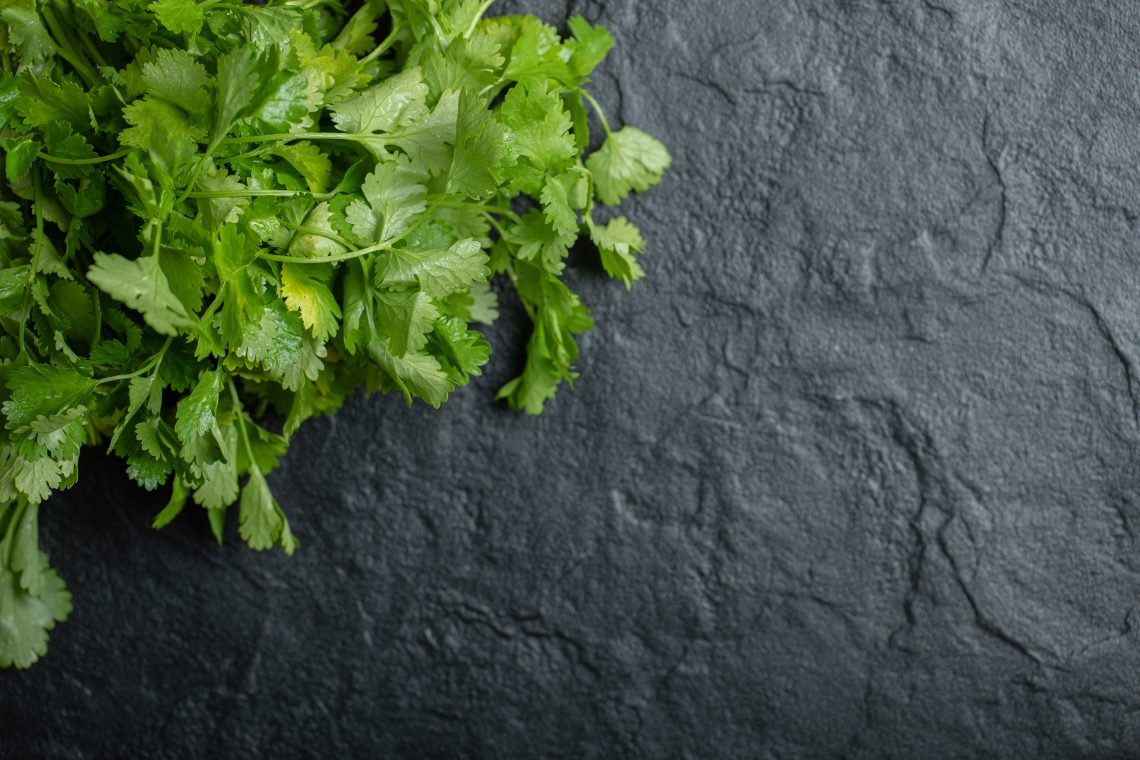
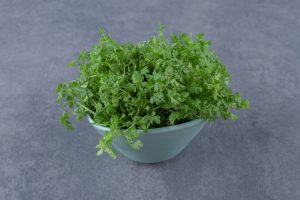





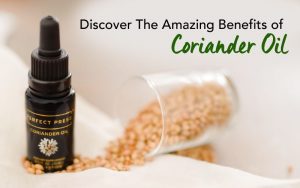

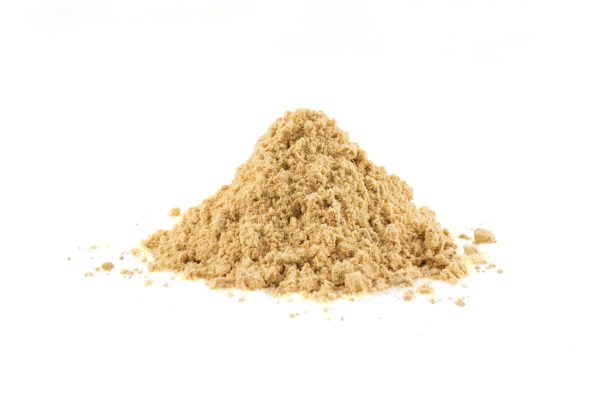


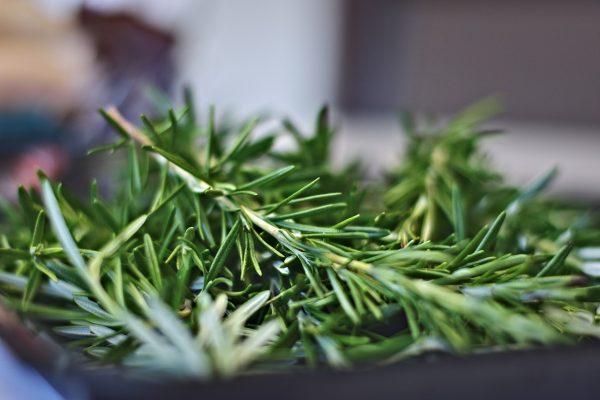



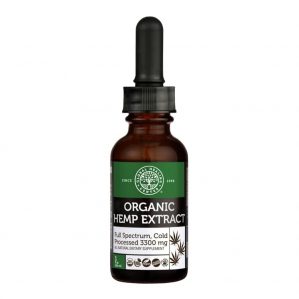
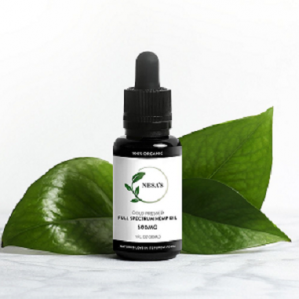

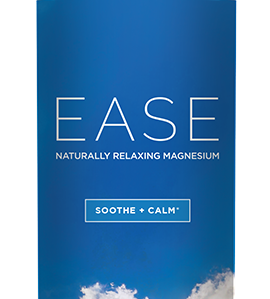



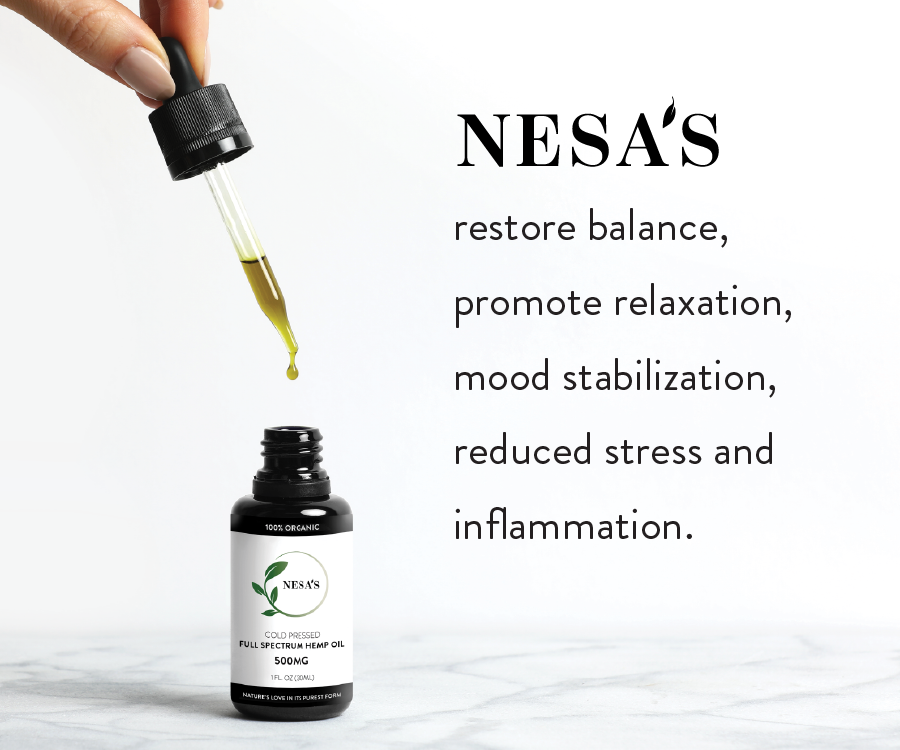







0 Comment